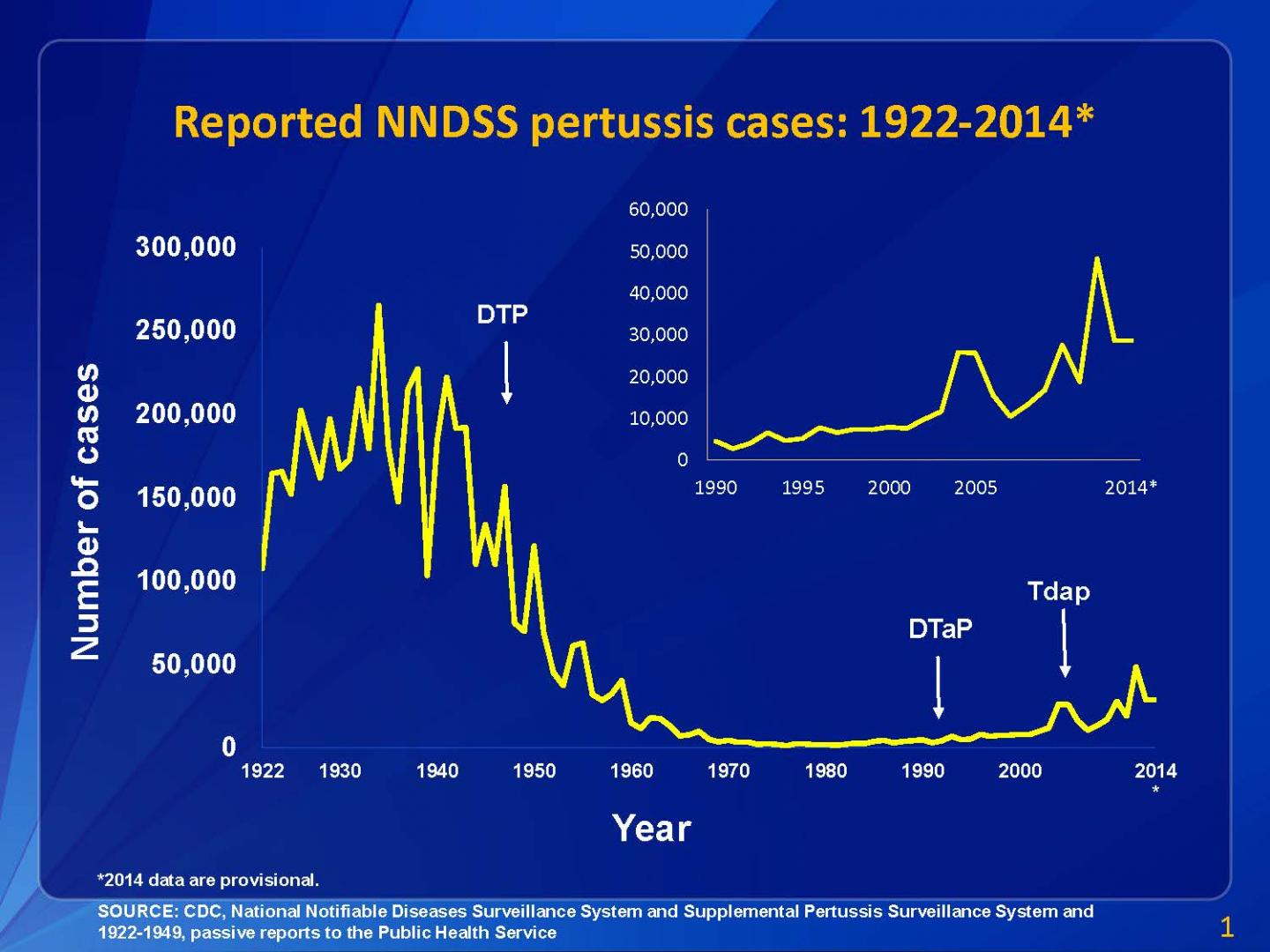In 2012 the US saw a resurgence of pertussis (whooping cough) cases. the highest since 1955. Like in engineering, the reason a small increase in anti-science beliefs can lead to a big change in the number of cases comes down to degrees of freedom and the math of networks.
A team led by Dr. Manoj Gambhir of Monash University, Dr. Thomas Clark from the Centers for Disease Control and Prevention, and Professor Neil Ferguson from Imperial College London, worked with 60 years of pertussis disease data to determine what best explained the recent increase in the disease. Using a mathematical modeling approach, they investigated several hypotheses for the upsurge in pertussis cases and found that the level of protection of the currently-used 'acellular' vaccine is lower than that of the previously-used 'whole-cell' vaccine.
Why that change? Because of concerns about the safety of vaccines

: Disease cases of pertussis reported by the National Notifiable Diseases Surveillance System in the US between the years 1922-2014. Credit: CDC, National Notifiable Diseases Surveillance System and Supplemental Pertussis Surveillance System and, between 1922-1949, passive reports to the Public Health Service
Other explanations of the upsurge in pertussis, like better reporting of cases, were less valid than the change in protection between the current and former vaccines.
"We used a rigorous procedure for fitting several mathematical models to the data, and we found that a drop in protection was always necessary to reproduce the rising pattern of disease we've seen in the U.S.," says Gambhir. "Crucially, our model also matches the age pattern of disease."
These results demonstrate that the resurgence in pertussis in the U.S. can be explained by past changes in vaccination policy. However, the authors' findings also suggest that the efficacy of the currently-used acellular vaccine, while lower than that of the whole-cell vaccine, is not much lower (around 80% protection for the first three doses of acellular vaccine versus 90% for whole-cell), and booster doses may be sufficient to curtail epidemics while novel vaccine research continues.
Citation: Gambhir M, Clark TA, Cauchemez S, Tartof SY, Swerdlow DL, Ferguson NM (2015) A Change in Vaccine Efficacy and Duration of Protection Explains Recent Rises in Pertussis Incidence in the United States. PLoS Comput Biol 11(4): e1004138.doi:10.1371/journal.pcbi.1004138





Comments